
Only 10 years ago, you might have been surprised to find out that Japan even made Western-style wine, let alone that it was well worth raising a glass too. But now, with Japanese wine scooping up award after award at international wine competitions the world is finally starting to take notice, and you should too!
While there are a good number of Japanese wineries with respectable histories, it is only in relatively recent years that Japanese wine has really begun to explore fresh frontiers in flavor and take on a character all its own. Leading the charge for this new generation of Japanese wine is the Grande Polarie winery that has been honored in competitions in Japan and abroad since its launch in 2003.
We caught up with Teppei Saimu, chief sommelier of the chic Grande Polarie Winebar Tokyo in Ginza, as well as our own resident wine expert, editor Timothy Sullivan, to check in on the here and now of Japanese wine.
What makes Japanese wine special?
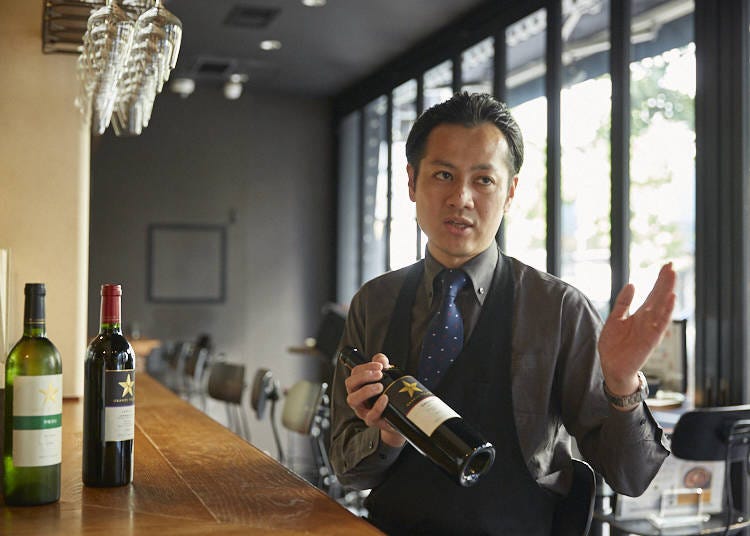
Teppei: If people are familiar with European or American wines, what makes Japanese wines stand out is how delicate and refined they are. Perhaps I should say it is the definition of fine wine. Japanese wines tend to shy away from some of the more robust or bold flavors you find in the West, aiming for something more elegant instead.
Japanese wine has evolved to match the Japanese palate, and for that reason you have many lighter wines that are popular with women. These crisper options won’t overpower delicate dishes. But to find out how they appeal to your own tastes, you’ll have to try them for yourself!

A lot of people ask me what country’s wines are most similar to those made in Japan. As an experienced sommelier, I can safely say that they are in a category of their own.
It is worth remembering that one of our vineyards in the town of Yoichi—which is also home to Nikka Whiskey’s Hokkaido factory—is actually on roughly the same latitude as the great vineyards of Europe, although it is also colder here on average. Even if the variety of grapes is the same as those grown in Europe, by growing them in the unique climate of Japan, the possibilities that can be explored are completely different.
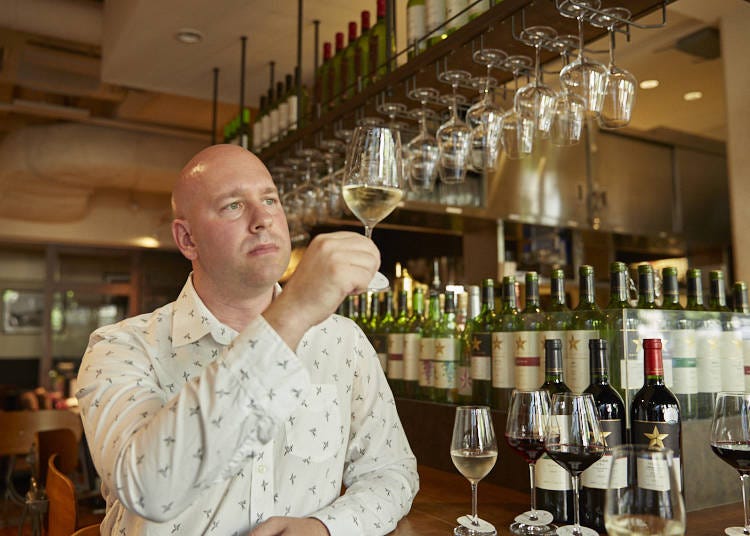
Timothy: As a New Yorker, I originally tried to compare Japanese wine with the Western wine I was familiar with. If you love wine, that can be a lot of fun. But, as you say, the more you think about it, the more you realize that Japanese wine is a world of its own.
Until now, there hasn’t been a particularly strong image of Japanese wine abroad. But, suddenly, out of nowhere, vineyards that no one had heard of started to win major awards. That is when people stood up and took notice.
The international wine industry has recognized Japanese wine, and now it is time for people to actually start drinking it! These days, you can easily find award-winning Japanese wines priced very reasonably wherever you go in Japan—so it is a great time for people to explore and find out for themselves.
What makes Grande Polaire a premium Japanese wine?
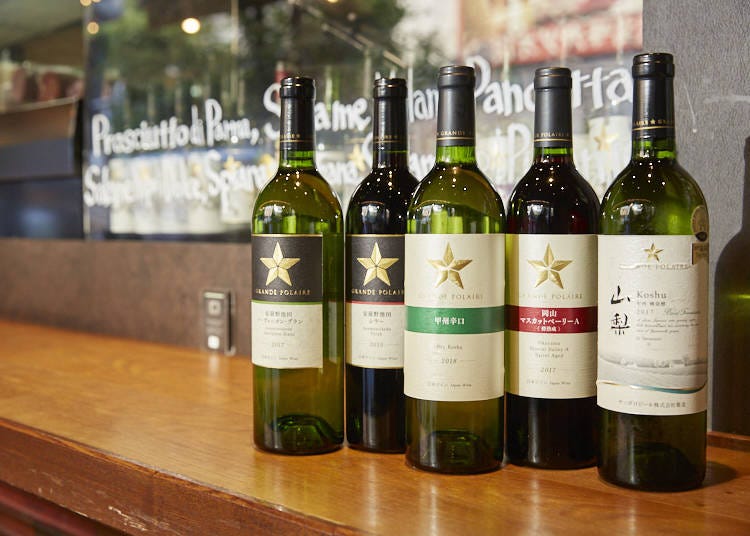
Teppei: Grande Polaire takes its name from French and means “the great North Star.” As you might know, Polaris is the brightest star in the night sky wherever you are in the world. This label was founded with that desire to shine out as a beautiful beacon for the best of Japanese wine.
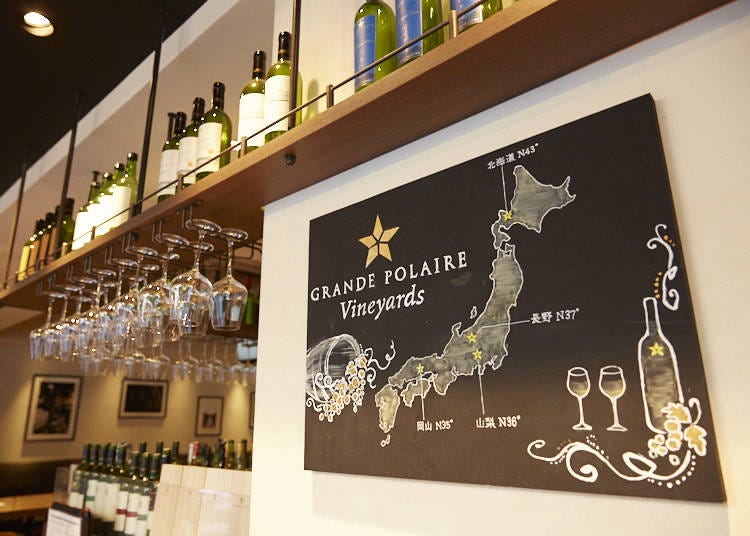
There are actually four vineyards spread across Japan that complete Grande Polaire lineup. Unlike France, where vineyards tend to be concentrated in a limited area, one of the attractions of Grande Polaire lies in how it finds the best area for each variety of grapes and the optimal wine-making climate. From Hokkaido in the far north to Nagano, Yamanashi, and Okayama Prefectures stretching across the main island of Honshu, the unique character of each area is allowed to shine through. There are also single-vineyard wines for which every grape is sourced from one area. This allows for precise quality control.
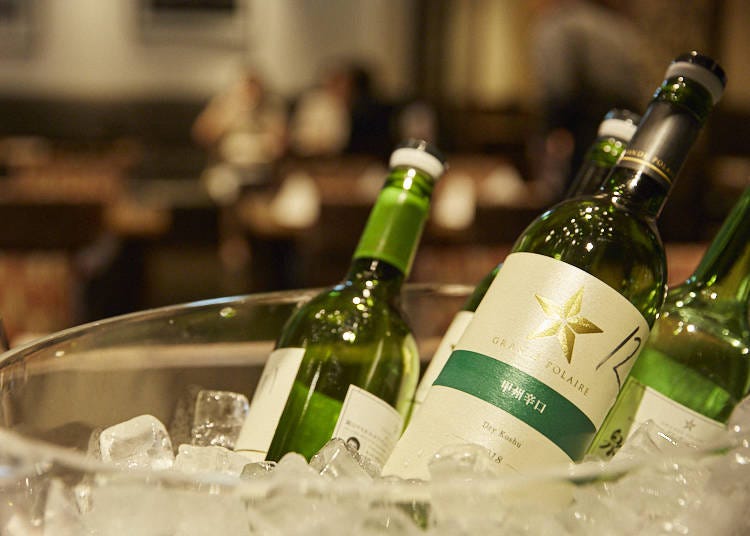
Of course, this is a completely made-in-Japan wine produced using premium Japanese grapes. If you think you have tried everything, then the Grande Polarie Dry Koshu made from the distinctively fruity Koshu grapes that are indigenous to Japan is for you. This combination of Japanese quality and production that draws on the unique conditions found only in Japan makes for a truly premium wine that may surprise you!

Timothy: From my perspective, because there is less of a focus on vintage wine in Japan, you can find great wines at a very competitive price. That is great for the wine lover, as they really can indulge in the best.
Until recently, there wasn’t such an image of Japan as having premium wines. But with labels such as Grande Polaire, that is quickly changing—especially if you don’t know what to order. Having a label that you can trust is a great way to start exploring new wines.
What are your highlights from the lineup?
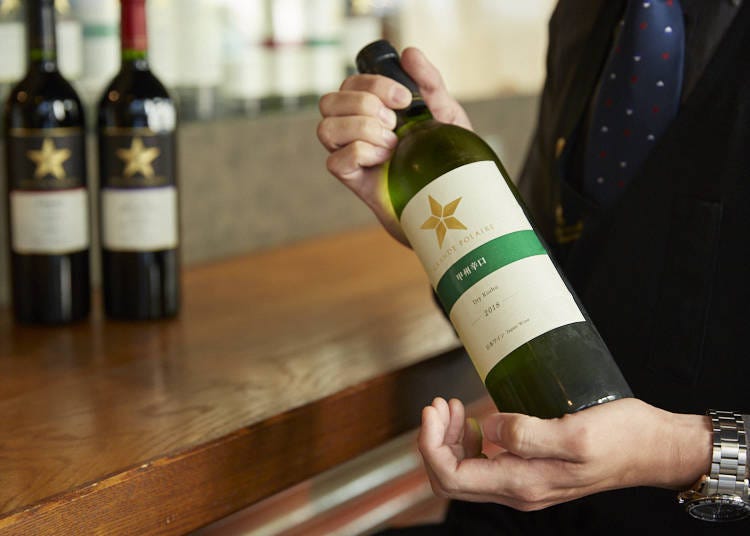
Teppei: As sommelier, my goal is to make sure that the customer enjoys the wine and that it matches their food. Most visitors from abroad who come to this wine bar don’t have a lot of experience with Japanese wines, so I want to show them something that will leave a distinct memory of Japanese wine.
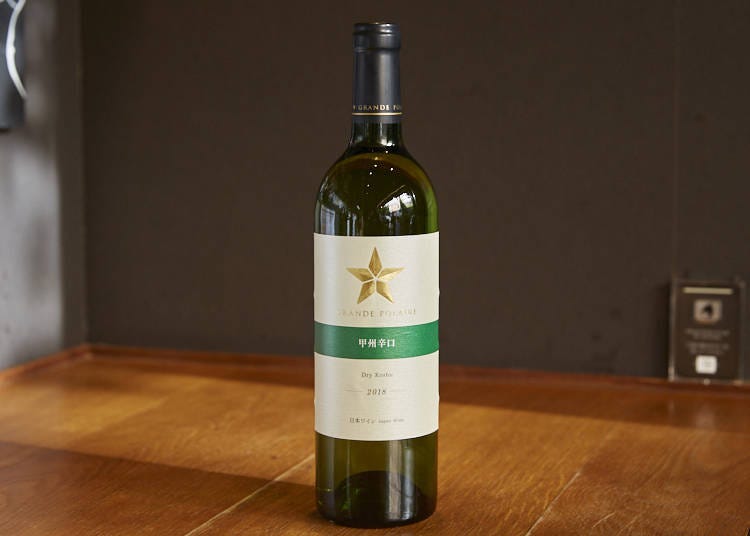
The Grande Polaire Dry Koshu mentioned earlier is just that. By fermenting the grapes at a low temperature, you get a wine with real depth that is still crisp and fruity. As we head into the summer, this is a great wine to enjoy with Japanese food—really accessible for everyone, but still with a taste that could only be Japanese. I would also recommend it for those who wouldn’t usually drink wine.
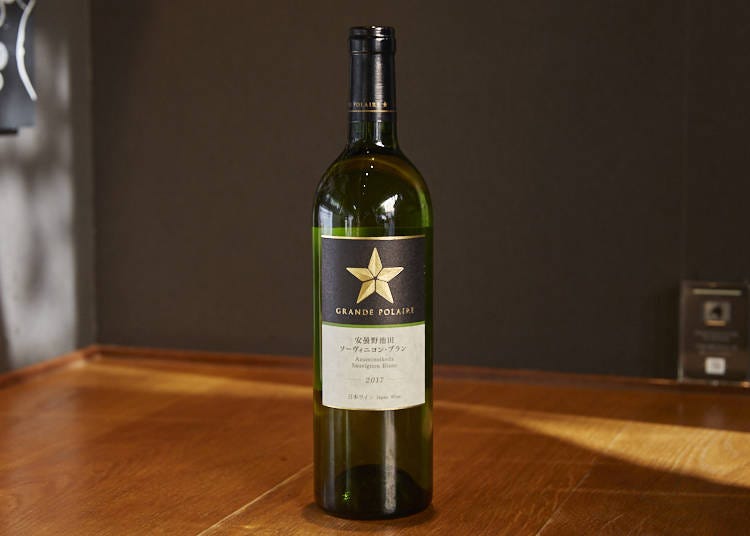
If someone comes in wanting to try absolutely anything, they are my dream customer. I can take them on a journey across Japan through the Grande Polaire range. I try and understand the customer and listen carefully to what they enjoy. For dry, refreshing citrus-infused wine, I have the Grande Polaire Azuminoikeda Sauvignon Blanc. For something smooth to relax with, there is the Grande Polaire Yoichi Pinot Noir.
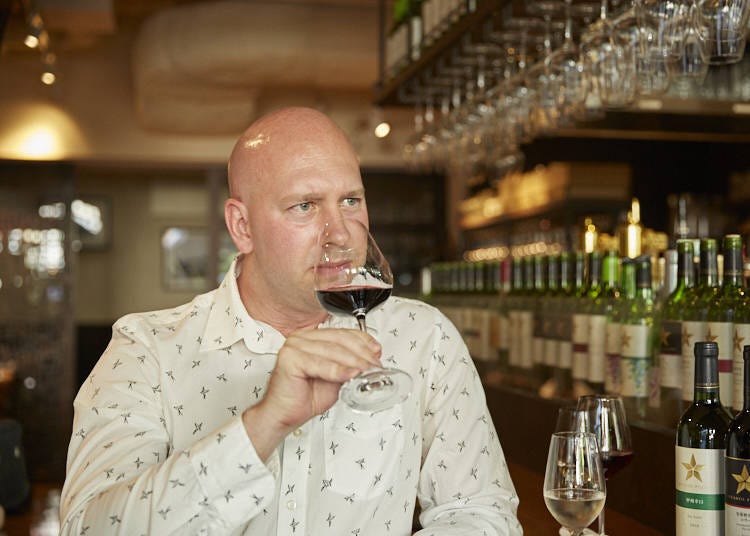
Timothy: When it comes to wine, I am naturally drawn to reds. So, for me, the Okayama Muscat Bailey A Barrelaged was a great entry point. It is probably the heaviest of the selection and, even though it is pretty robust, you can really taste the sunny weather of the Okayama area through those muscat grapes. Japanese grapes really are delicious!
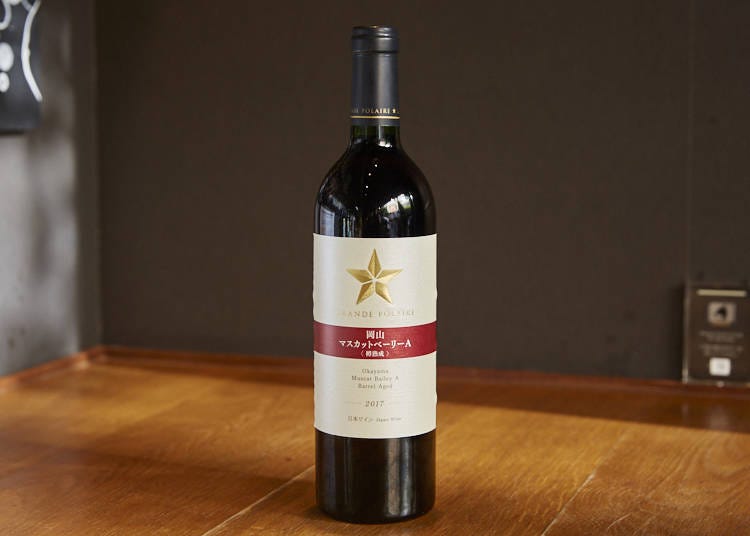
I advise everyone to start as I did and choose a wine in line with their preferences. From there, you can start to experiment. Especially at a wine bar such as this, you can order by the half glass to try lots of different varieties in a single sitting. Or, if you want a random surprise from the sommelier, order the “secret wine”!
I hope that more people from abroad will start getting into Japanese wine and wine culture. There is so much to enjoy!
What is special about the Grande Polaire wine-making process?
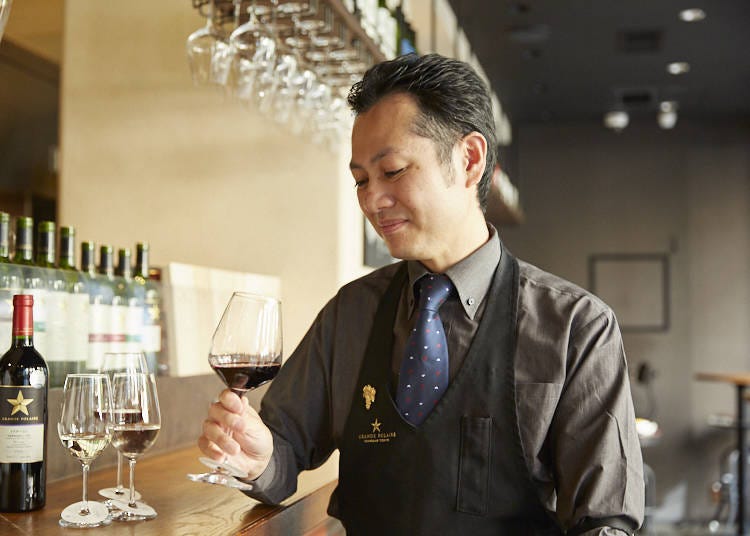
Teppei: Of course, soil condition and climate are really important, but what really makes Grande Polaire stand out is the size of the barrels and distilling tanks. Everything is really small scale, and that system allows the winemakers to be in control of every step of the distillation process. It is that artisanal approach that makes for a premium wine.
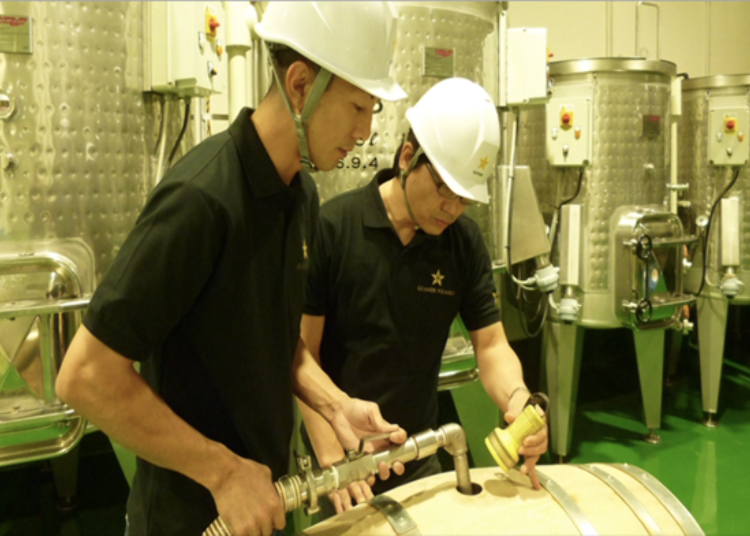
Timothy: The thing that really strikes me is how much Japanese wineries experiment with the process. People observe tradition but aren’t afraid to break the mold. Japanese wineries deserve recognition for that.
Ironically, a lot of Western wineries don’t try anything new despite having long histories. Japan is full of innovation in wine right now, but winemakers here never forget how important the role of nature is—especially in these wines, as there are no artificial flavors.
What food would you pair with the Grande Polaire range?
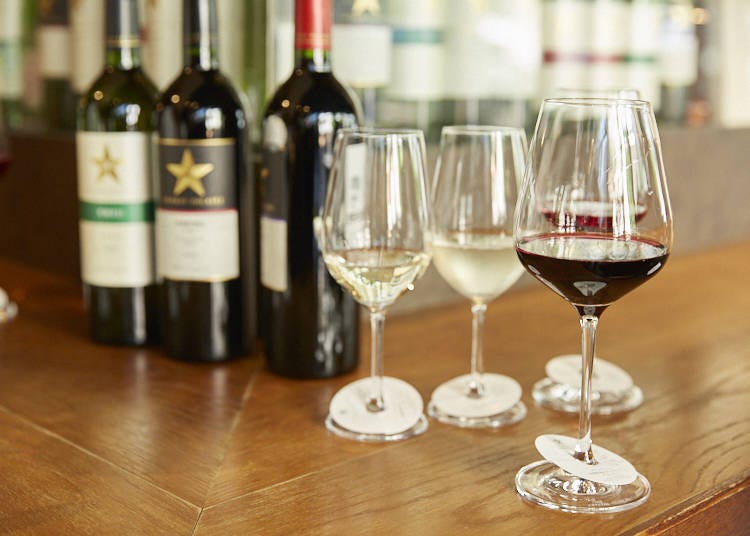
Teppei: While the basic rule that white wines work well with fish and reds with meat holds true, you can really fine tune your wine to resonate with the flavors of the food. A good example of breaking the rules is Japanese wagyu beef. If the meat is on the fatty side, a white wine would be my recommendation to balance the strong flavors.
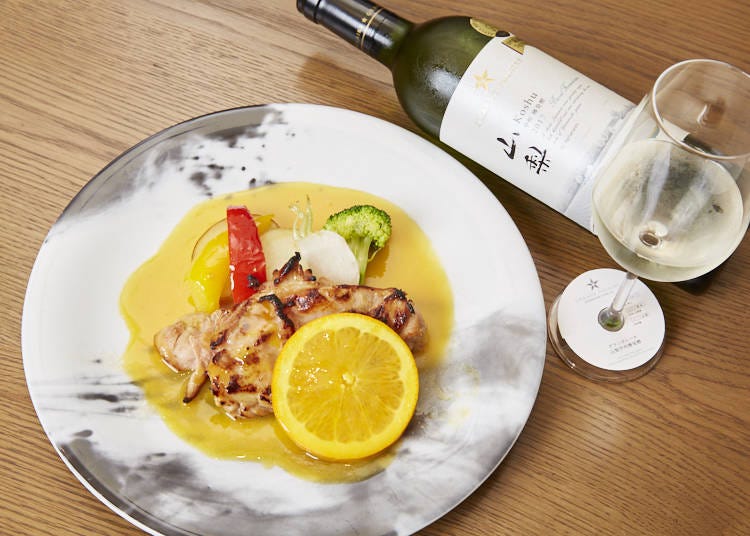
The Grande Polaire Dry Koshu works exceptionally well with most washoku (Japanese cuisine), but here we also recommend it for French-style honey orange chicken. Coincidentally, both the wine and the kemmi-brand chicken are from Yamanashi Prefecture. Building those connections through wine pairing is one of the real pleasures of my job.
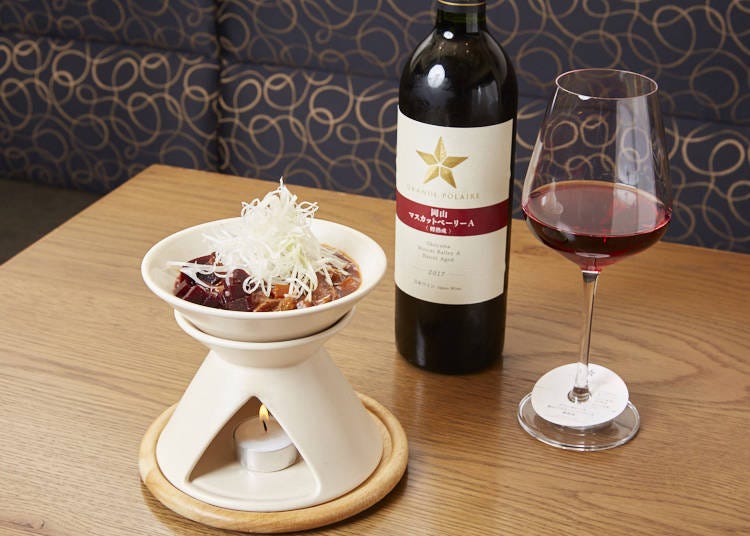
Timothy: I am already looking at the menu and seeing Okayama’s Grande Polaire paired with Hokkaido’s grilled venison—seems like such a perfect pairing.
Explore the Wine Cellar of the Grande Polaire Winebar Tokyo
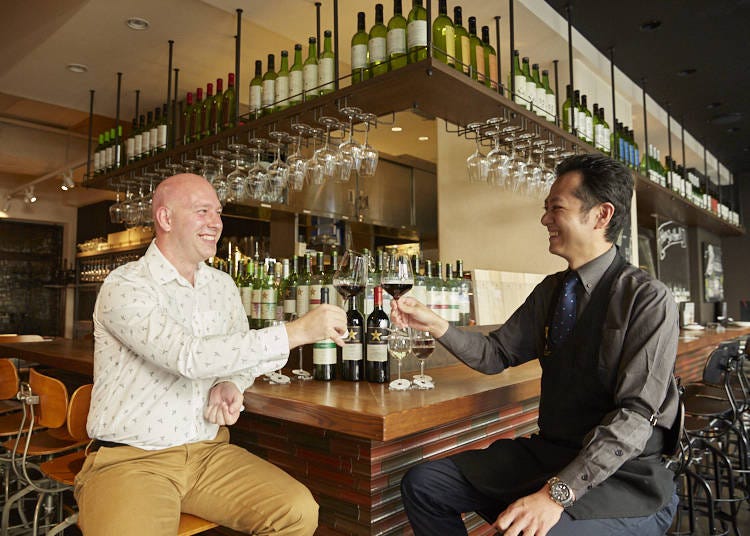
For the full Grande Polaire wine lineup as well as fabulous food to match, make a date with the Grande Polaire Winebar Tokyo. As the temperature rises from late spring through the long Japanese summer, the front of the wine bar is opened up to the Ginza streets, making for a convivial environment in which you can relax and enjoy the sultry summer nights.
The easy-to-navigate menu pairs fine wine with a variety of global cuisine made with carefully sourced Japanese ingredients. For a perfect Ginza night spent with fine Japanese wine at the heart of the city’s style hub, head for the Grande Polaire Winebar Tokyo.

For more information on the Grande Polaire story, check out the link below.
-
Grande Polaire Winebar Tokyoグランポレール ワインバートーキョー 銀座コリドー街店
- Address 8-2, Ginza, Chuo-ku, Tokyo point
-
Nearest Station
Ginza(Tokyo)
Subway Shimbashi Station Exit 5 5-minute walk
- Area
- Category
*Prices and options mentioned are subject to change.
*Unless stated otherwise, all prices include tax.
Popular Tours & Activitiess
-
Ad

(Opening in Jan 2026) 'THE SUMO LIVE RESTAURANT HIRAKUZA GINZA TOKYO!' 5 Exciting Ways to Experience the World of Sumo!
-

New in Ginza! Air BicCamera Ginza Opens with a Faster, More Convenient Shopping Experience
by: Guest Contributor
-

Strawberries, Style, and Tokyo’s Coolest Neighborhood: Winter Afternoon Tea in Kichijoji
by: Guest Contributor
-

Japan’s Shinkansen Is About to Change Travel in an Unexpected Way
by: Guest Contributor
-
Ad

Complete Guide to Ueno's National Museum of Nature and Science, the Perfect Place to Visit on Rainy Days or With Children
-

Jujutsu Kaisen Takes Over JR East With a Wrapped Shinkansen This Winter
by: Guest Contributor
Inspiration for Accommodations
-

Enjoy Mt. Fuji from the Comfort of Your Room! Recommended Ryokan with Mt. Fuji View
-

Stay Near the Cherry Blossoms! Hotels for Cherry Blossom Viewing in Tokyo
-

Family-Friendly Hotels with Free Shuttle to Disneyland: Convenient Access for a Magical Stay
-

Top Ranked Hakone Hotels with Mt. Fuji View: Enjoy Stunning Scenery from Your Private Space
-

Convenient Tokyo Hotels with Airport Shuttle: Ideal for Families and Heavy Luggage
-

Stunning Tokyo Tower View Hotels: Enjoy Spectacular Scenery from Your Private Space
-

Convenient Asakusa Hotels with Kitchens: Ideal for Extended Family Visits
-

Experience Luxury: Hakone's 10 Best Five-Star Accommodations
-

Enjoy Mt. Fuji Autumn Leaves! Top Hotels Near the Popular Autumn Leaves Corridor
-

Experience Hakone Fall Foliage from Your Room with Stunning Views
-

NEWoMan Shinjuku’s Amazing Food Court: Savor Delectable Dishes from Early in the Morning ‘til Late at Night!
-

Tokyo Roppongi|Roppongi Station Area Map & Sightseeing Information
-

Late-Night Sake Bars & More: Top 3 Recommended Gourmet Spots in Shibuya, Tokyo
-

Ueno Food Recommendations: 3 Take-Out Shops in Ueno Loved by Locals
-

Tokyo's Top 3 Breakfast Spots in Ikebukuro: Start Your Day Deliciously!
-

Autumn in Japan 2025: Fall Foliage Forecast & Where to Enjoy the Colorful Leaves (+Tour Info)
- #best ramen tokyo
- #what to buy in ameyoko
- #what to bring to japan
- #new years in tokyo
- #best izakaya shinjuku
- #things to do tokyo
- #japanese nail trends
- #what to do in odaiba
- #onsen tattoo friendly tokyo
- #daiso
- #best sushi ginza
- #japanese convenience store snacks
- #best yakiniku shibuya
- #japanese fashion culture
- #best japanese soft drinks












